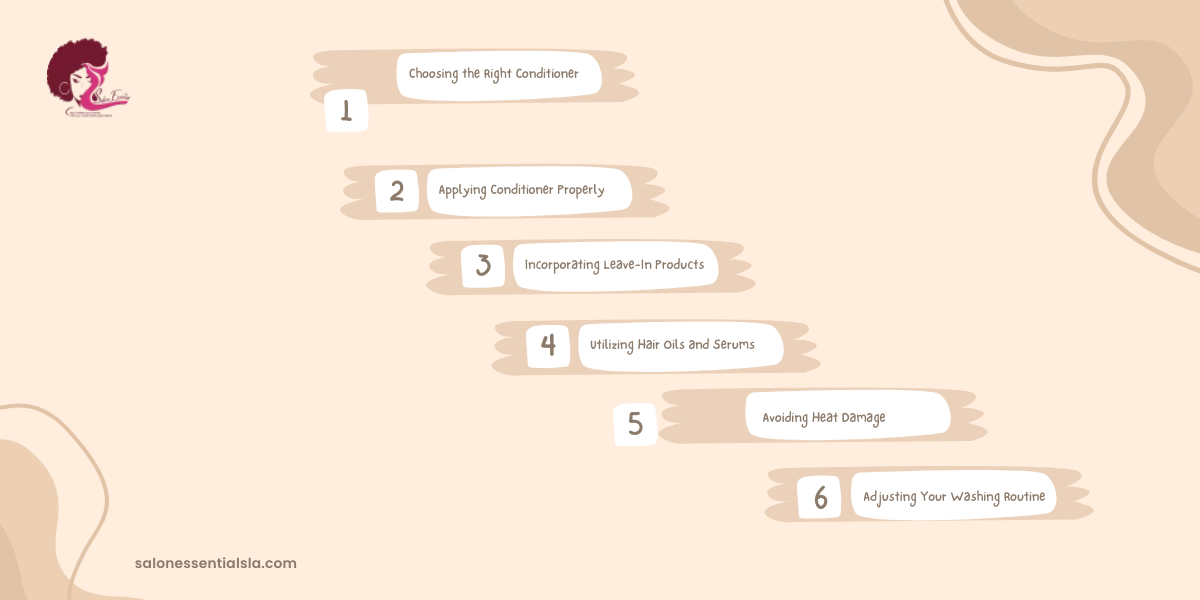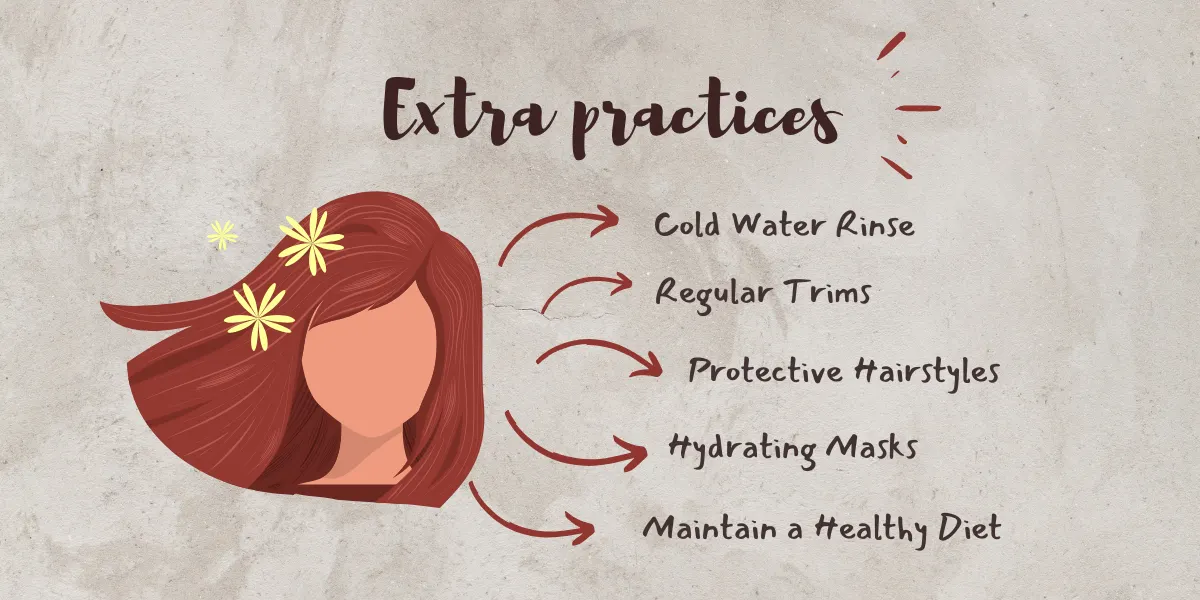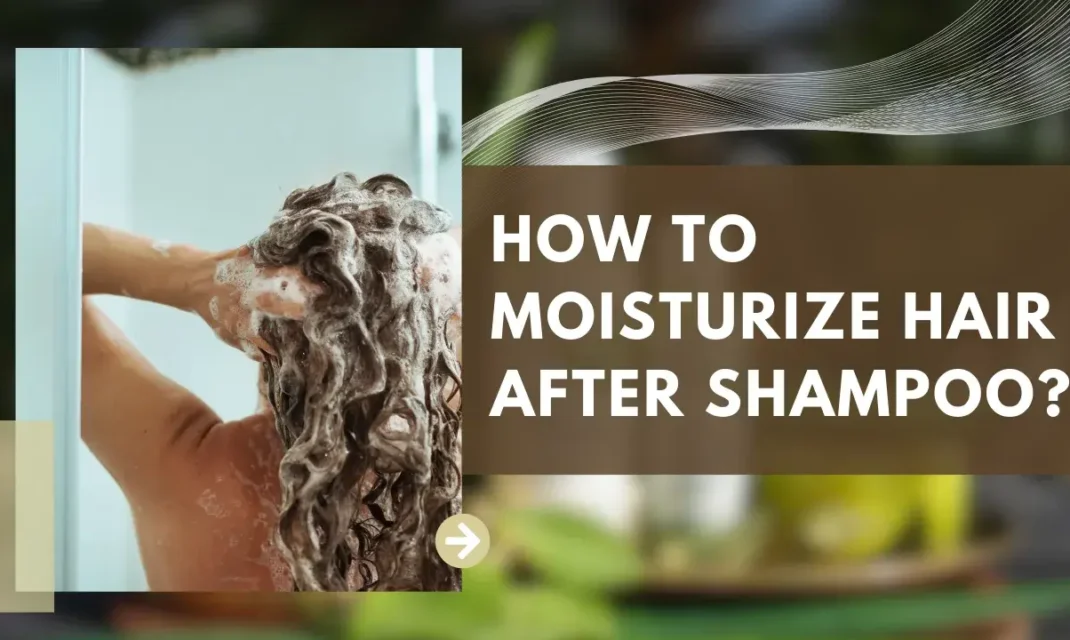Moisturizing your hair after shampooing is an essential step in maintaining healthy, vibrant locks. Many of us focus on cleansing our hair, but it’s equally important to replenish moisture and restore its natural balance. Shampoos can strip away the oils that keep our hair hydrated, leading to dryness, frizz, and breakage. Here, we’ll explore effective techniques and products that can help you moisturize your hair after shampooing for optimal health and shine.

Choosing the Right Conditioner
Selecting a suitable conditioner is crucial in your post-shampoo routine. Look for products rich in hydrating ingredients such as shea butter, argan oil, or coconut oil. These components penetrate the hair shaft and provide deep nourishment. If your hair tends to be particularly dry or damaged, consider using a deep conditioning treatment once a week to offer additional moisture and repair.
Applying Conditioner Properly
To maximize the benefits of your chosen conditioner, it’s essential to apply it correctly. After rinsing out your shampoo, squeeze excess water from your hair gently. Take a generous amount of conditioner and work it through your hair, focusing on the mid-lengths and ends where moisture is most needed. Avoid applying conditioner directly to the scalp as this can lead to greasiness.
Incorporating Leave-In Products
Integrating a leave-in conditioner into your hair care routine can significantly enhance moisture retention. After rinsing out your regular conditioner, apply a leave-in product to damp hair. These formulations are designed to provide ongoing hydration and protect against environmental stressors.
Utilizing Hair Oils and Serums
Using hair oils or serums can help seal in moisture and give shine in addition to conditioners. Consider adding a few drops of a nourishing oil, such as almond, jojoba, or argan, after using your leave-in conditioner. By sealing the cuticle, these oils can stop moisture loss from occurring during the day. Use them sparingly, paying special attention to the tips of your hair to stop moisture loss and give it a healthy sheen. Your hair tends to be drier and more prone to split ends at the ends, so concentrate your oil application there.
Avoiding Heat Damage
While moisturizing your hair is essential, it’s equally important to protect it from heat damage. If you plan to use heat styling tools after washing your hair, always apply a heat protectant spray or serum before you begin styling. This will create a barrier between your hair and the high temperatures, helping to prevent dryness and breakage.
Adjusting Your Washing Routine
To maintain optimal moisture levels in your hair, consider adjusting how often you wash it. Depending on your hair type, washing it too frequently can strip it of its natural oils, leading to dryness. For those with dry or curly hair, washing 1-2 times a week may be sufficient, while those with oily hair might need to wash more often. Experiment with your routine to find a balance that keeps your scalp clean without compromising moisture.

Extra practices
To maintain healthy and well-moisturized hair, think about adding a few extra practices to your routine. Here are some finishing touches you might want to include:
- Cold Water Rinse: After conditioning, a final rinse with cold water can help seal the cuticles of your hair, locking in moisture and adding shine. Cold water helps close the cuticles, which can make your hair appear smoother.
- Regular Trims: Keeping your hair regularly trimmed can help eliminate split ends and prevent further damage, allowing for better moisture retention. Aim for a trim every 6-8 weeks to maintain healthy ends.
- Protective Hairstyles: Wearing protective hairstyles that limit manipulation and exposure to damaging elements is something to think about. Braids, buns, or updos can help protect your hair from breakage while also promoting moisture retention.
- Hydrating Masks: Incorporating a deep conditioning mask into your weekly routine can provide an extra boost of hydration. Look for masks that contain hydrating ingredients like shea butter, coconut oil, or honey. Apply the mask to clean, damp hair and leave it on for the recommended time before rinsing thoroughly.
- Maintain a Healthy Diet: Nourishing your hair from the inside out is just as vital as external care. A well-balanced diet rich in vitamins and minerals can support overall hair health and enhance moisture retention. Incorporate foods high in omega-3 fatty acids, such as salmon, walnuts, and flaxseeds, which can promote hydration and strengthen hair strands.
Summary
To maintain healthy hair, follow up with a hydrating conditioner, apply a leave-in conditioner, use lightweight hair oil or serum, and use deep conditioning treatments once a week. Minimize heat styling and use hydrating hair mists to refresh and add moisture. After washing, squeeze out excess water with a microfiber towel or old cotton t-shirt to reduce frizz. Wash hair 2-3 times a week, adjusting based on hair type and lifestyle. Drink plenty of water to keep both body and hair hydrated.

